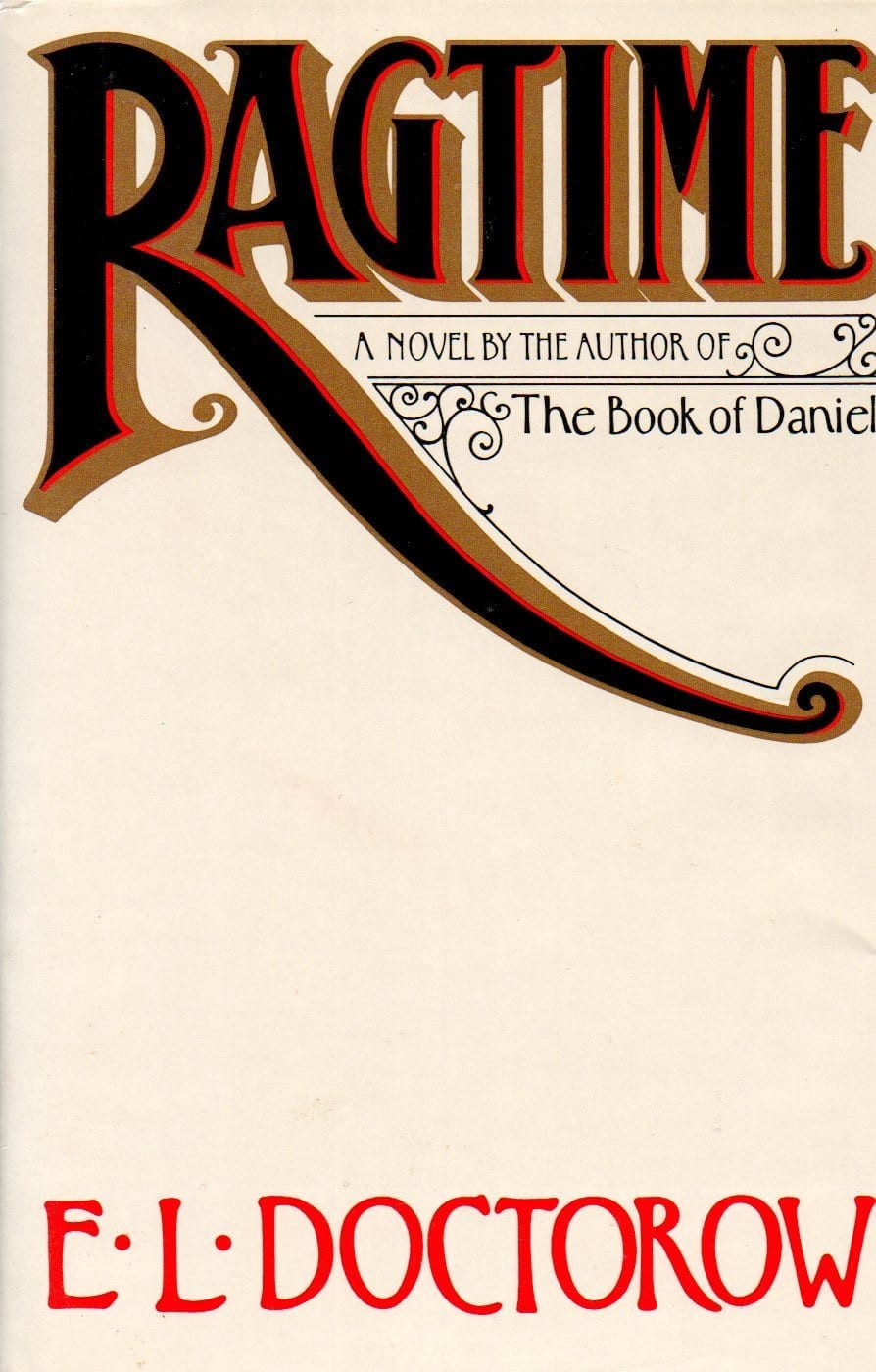Harry Houdini. Henry Ford. John Pierpont Morgan. Booker T. Washington. Emma Goldman. Archduke Franz Ferdinand. These are just some of the real-life figures who appear in E. L. Doctorow’s historical novel, Ragtime (1974). Through a blend of fact and fiction, Doctorow depicts New York at the turn of the twentieth century when social, political and racial tensions were high. The lives of a diverse set of characters are intertwined, but the narrative primarily focuses on a rich family living in New Rochelle: Father, Mother, The little boy, Mother’s Younger Brother, and Grandfather.
The family’s lives dramatically change when Mother discovers a new-born baby buried in their garden, abandoned by his mother but still alive. The child’s troubled mother, a black woman called Sarah, eventually comes to stay with them and is visited every Sunday by the father. Coalhouse Walker is persistent in his attempt to win her over, but when he finds himself involved in an incident with racist firemen, things quickly escalate to the point of a wide-scale showdown between him and the authorities.
Father returns from an expedition to the North Pole not only to discover the new addition to the household but also that his relationship with his wife has lost its spark. Younger Brother, meanwhile, is infatuated with the pin-up girl Evelyn Nesbit, who is trying to move on from the ‘Trial of the Century’. He is a lonely, brooding man whose talent for making explosives takes him in unexpected directions.
The novel also follows a fictional family at the other end of the socio-economic ladder, a Jewish immigrant man and his daughter. Tateh is a silhouette artist, and after Evelyn Nesbit shows up on his street and displays an unexpected interest in him and his daughter, she threatens to bring scandal into their lives.
‘Father watched the prow of the scaly broad-beamed vessel splash in the sea. Her desks were packed with people. Thousands of male heads in derbies. Thousands of female heads covered with shawls. It was a rag ship with a million dark eyes staring at him. Father, a normally resolute person, suddenly foundered in his soul. A weird despair seized him.’ – E. L. Doctorow
There is just so much going on, from Harry Houdini’s stunts and sudden passion for aviation, to the mega-rich J.P. Morgan’s fascination with ancient Egypt, that one might expect Doctorow to get carried away and for the important themes of the novel to be lost amongst some of the quirks and irregularities of each character and their respective storylines. This is not the case. Ragtime never ceases to be captivating, and each thread ties together seamlessly.
The result is a complex and richly detailed portrait of the United States of America in the years preceding the First World War as a nation where capitalists like Ford and Morgan prospered, while the poor struggled to survive amid abject poverty. Topics like racism and immigration are approached in an unflinching manner in Ragtime, and instances of the former are all the more disturbing when placed alongside recent tragedies of our time.
Unfortunately, despite being described in a book set over one hundred years ago and published almost half a century ago, the appalling treatment of African Americans reflects a deeply-ingrained racism that still exists and continues to rear its monstrous head in modern America.
Words by Callum McGee
Want more Books content from us? Click here!
